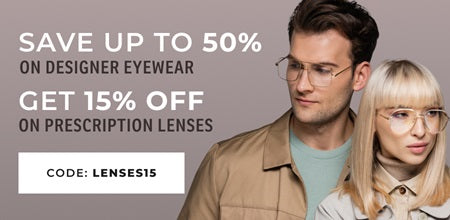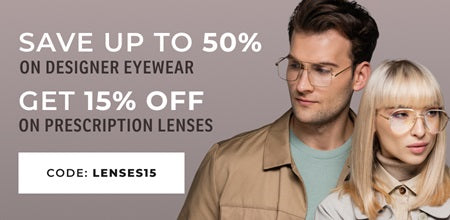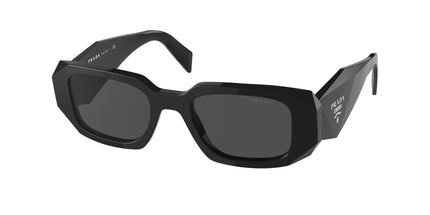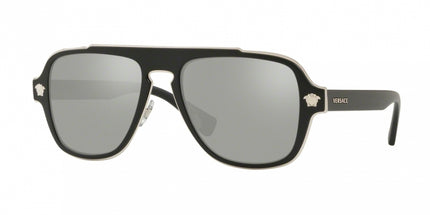Understanding Amblyopia (Lazy Eye) and How to Treat It

Hey there, vision seekers! Ever wondered why your kiddo's eye seems to wander off on its own little adventure? Or maybe you've noticed your own vision acting a bit wonky? Well, you might be dealing with something called amblyopia, more commonly known as a lazy eye. But don’t worry, we’ve got you covered! In this post, we’re diving into everything you need to know about lazy eye—from what it is, to the symptoms, the treatments, and how you can keep your vision sharp with the coolest glasses from DesignerOptics.com. Let’s get rolling!
What is Amblyopia?
Alright, let’s break it down. Amblyopia, or lazy eye, is a vision development disorder where an eye fails to achieve normal visual acuity, even with prescription glasses or contact lenses. It’s like your eye decides to take a backseat and let the other eye do all the work. This usually happens when there’s a problem with the visual pathway to the brain during childhood. And no, it’s not the same as being cross-eyed or having a squint, though it can be related to crossed eyes, which is a condition where the eyes don't line up properly and can lead to amblyopia.
So, what causes this rogue eye behavior? There are a few usual suspects:
- Strabismus: This is when the eyes are misaligned.
- Refractive Errors: One eye might have a significant difference in prescription compared to the other. Refractive errors can cause blurry vision, leading to amblyopia.
- Deprivation: Anything that obstructs vision in one eye, like a cataract.
Understanding the root cause is crucial because it guides the treatment plan. And trust us, catching it early makes a world of difference.
Symptoms of Amblyopia
Now, how do you know if you or your little one has a lazy eye? Symptoms can be subtle, but here’s what to watch for:
In Children:
- Eye drifting inward or outward
- Poor depth perception
- Squinting or shutting one eye
- Head tilting
- Trouble with schoolwork (if they're old enough)
In Adults:
- Reduced vision in one eye
- Poor depth perception
- Eye strain
- Difficulty with tasks requiring sharp vision (like reading or driving)
Spotting these signs early can make a huge difference. It’s like catching that mischievous eye red-handed before it gets too lazy!
Diagnosis
If you suspect amblyopia, the next step is getting a proper diagnosis. This involves a trip to the optometrist or ophthalmologist. Here’s what to expect:
- Visual Acuity Test: This checks how well you can see from a distance.
- Refraction Test: Determines the exact prescription needed for glasses or contacts.
- Eye Alignment Test: Assesses how well your eyes work together.
- Comprehensive Eye Exam: Includes checking the health of your eyes. It is important to consider family history in the diagnosis process.
Regular eye exams are key, especially for kids. It’s recommended to have their eyes checked at 6 months, 3 years, and before starting school, then every couple of years after that. Early diagnosis and regular check-ups are crucial for maintaining a child's vision.
Treatment Options
Good news—amblyopia can be treated! The earlier, the better, but there are options for all ages. Here’s the lowdown:
1. Patching: Use an eye patch to cover the stronger eye, forcing the lazy eye to work harder. It’s like sending the lazy eye to the gym!
2. Atropine Drops: Use eye drops to blur vision in the stronger eye, stimulating the weaker eye to strengthen its visual input.
3. Vision Therapy: Exercises designed to improve the brain-eye connection. These exercises help enhance the visual processing in the weaker eye.
4. Corrective Lenses: Glasses or contact lenses to correct refractive errors.
Each treatment has its pros and cons, and what works best often depends on the individual case. Early lazy eye treatment is crucial for better outcomes.
Importance of Early Detection and Diagnosis
Why all this fuss about catching amblyopia early? Because early treatment can prevent long-term vision problems. Kids’ brains are super adaptable, which means they can correct vision issues more effectively. Untreated, amblyopia can lead to permanent vision loss and affect daily activities like reading, driving, and even playing sports. Plus, there’s a ton of research showing that early intervention leads to better outcomes. So, don’t procrastinate—get those peepers checked!
Designer Optics: Your Go-To for Stylish and Functional Glasses and Contact Lenses
Now, let’s talk style. Whether you need glasses for your little one or yourself, Designer Optics has got you covered. We offer a wide range of glasses that are both stylish and functional. From trendy kids' frames to chic adult designs, we’ve got something for everyone. Plus, our glasses are designed to provide the best vision correction, making them perfect for those dealing with amblyopia.
Why choose Designer Optics? Here’s why:
-
Wide Selection: Tons of styles and brands to choose from.
-
Affordable Prices: Great deals on top-quality frames.
-
Expert Advice: Our team is here to help you find the perfect pair.
Get the Best Glasses for Your Eyes Today!
Alright, vision warriors, let’s wrap this up. Amblyopia, or lazy eye, might sound a bit daunting, but with the right info and early detection, it’s totally manageable. Keep an eye out for symptoms, get those regular check-ups, and don’t hesitate to seek treatment. And remember, DesignerOptics.com is your one-stop-shop for all your eyewear needs. Check out our selection and get the perfect pair of glasses today!
So, what are you waiting for? Head over to DesignerOptics.com and give your eyes the style and care they deserve!















 Back to Blog Page
Back to Blog Page











